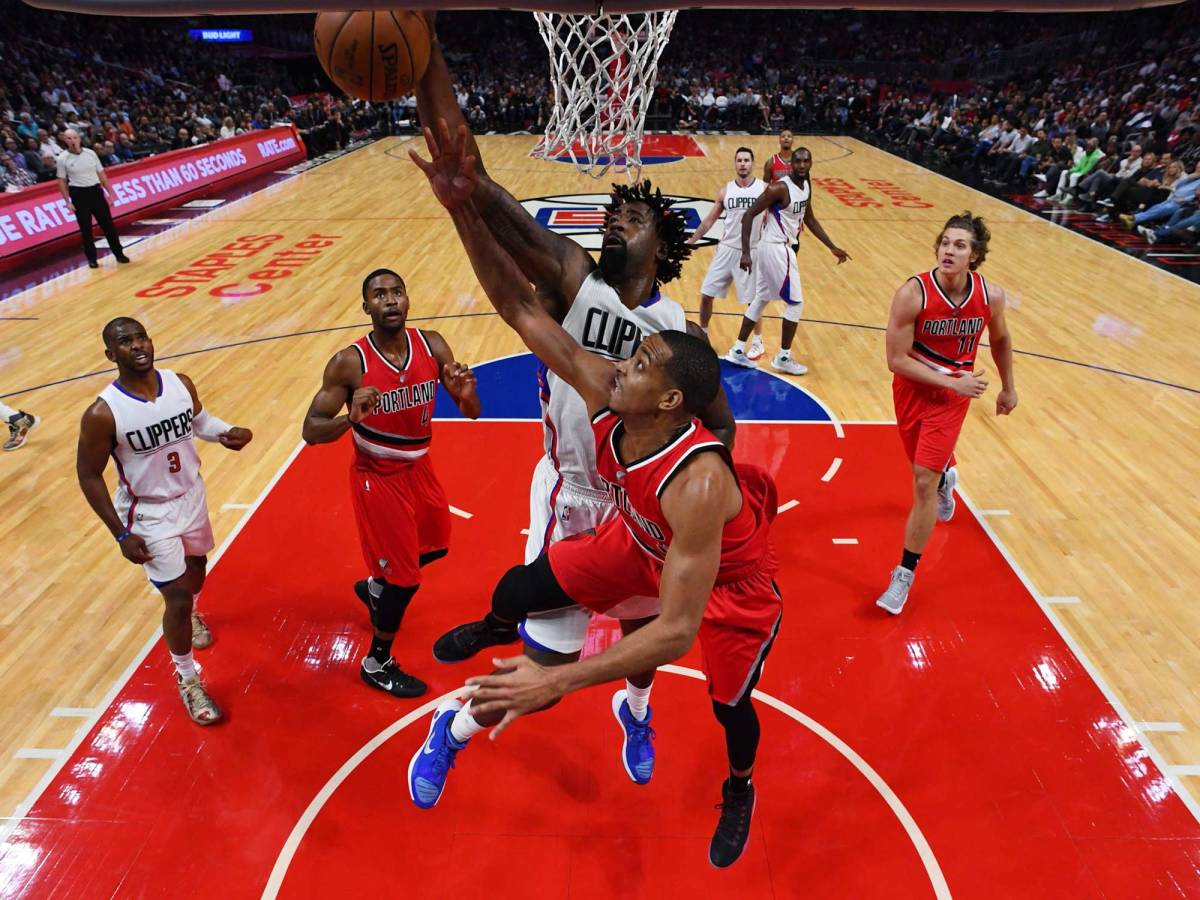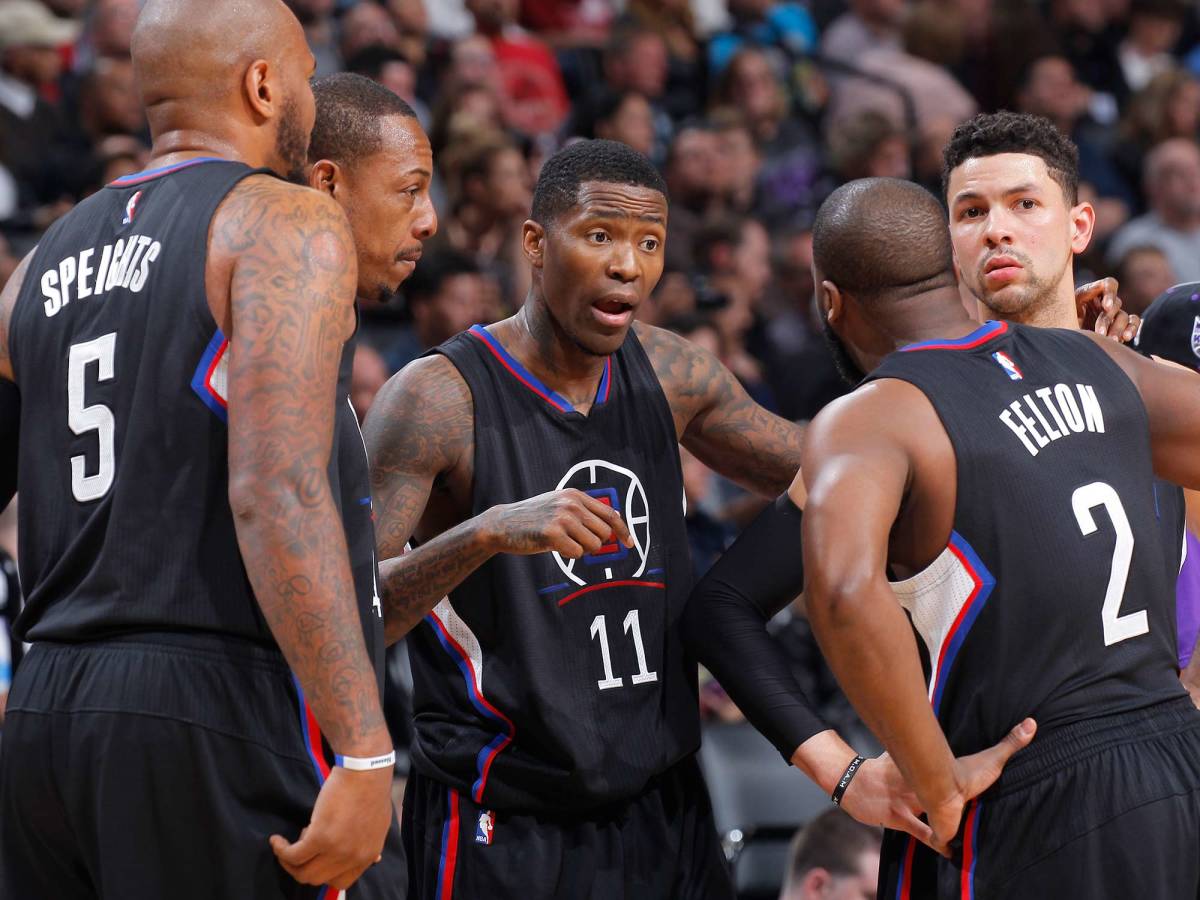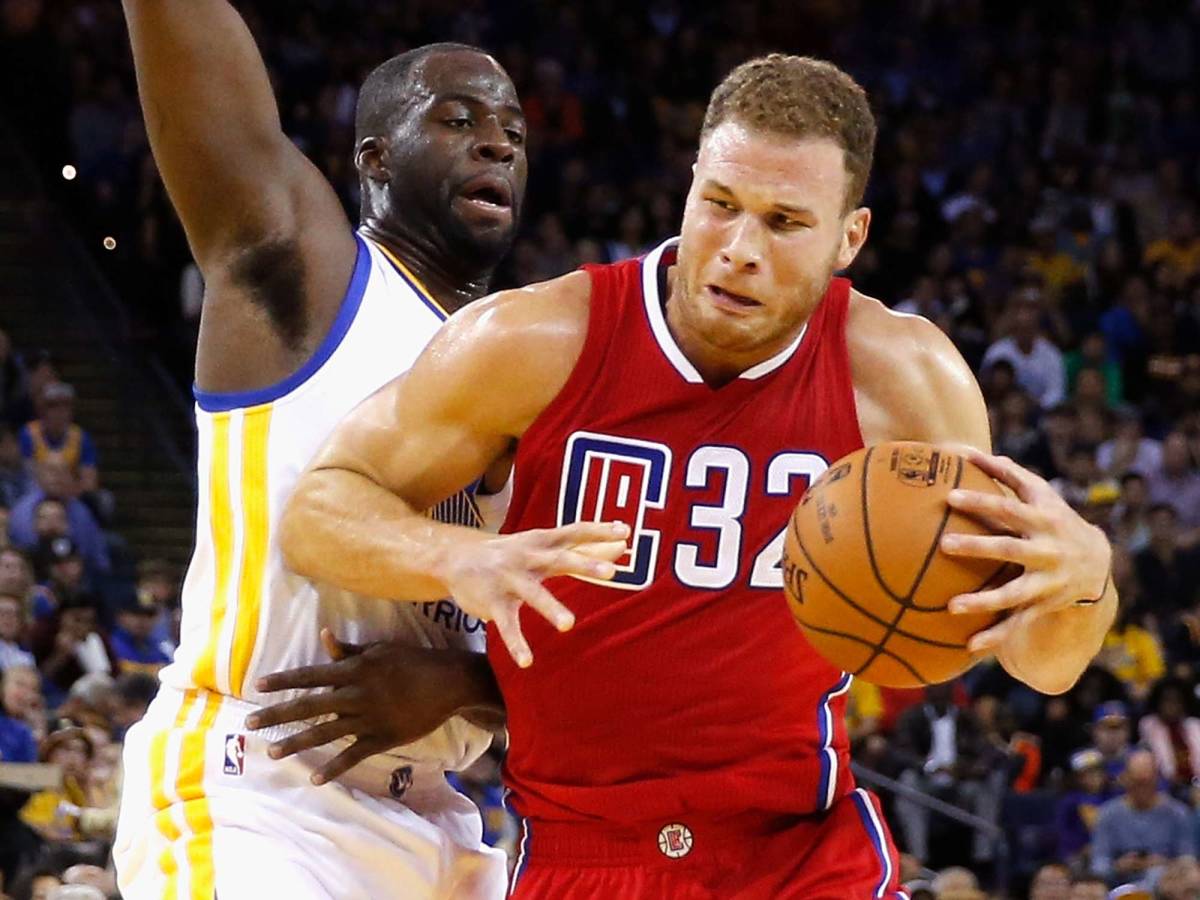Can The Clippers Derail Warriors-Cavs III?

This story appears in the December 12, 2016, issue of SPORTS ILLUSTRATED. To subscribe, click here.
Doc Rivers was hoarse and happy, fresh off another win during the fastest start in Clippers’ history, raving about how quickly J.J. Redick could decelerate from a full sprint and square up for a quick-trigger three. “Maybe four guys in the league can make that shot,” the veteran coach said, prompting the obvious follow-up: Who are the others? Rivers then started blindly down a dark alley: “Stephen Curry ... uh, Klay Thompson and then ... Kevin Durant.” The moment the third name came off his lips, Rivers started smiling and then broke into a sheepish laugh. “I don’t even know,” he said, the room of reporters chortling along. “We’ll keep the talk about them.”
Them, of course, are the Warriors, who entered December with the league’s best record, top point differential and most hype. Meanwhile, the Cavaliers are holding up their end of the bargain, sitting atop the East. One month in, the rest of the league is already just trying to stay close to these two Superteams.
Despite Rivers’s deflection, the Clippers look like the leaders of the chase pack, boasting the NBA’s second-best point differential—helped by blowout wins over the Spurs and Cavaliers. While their key actors are the same, the Clippers’ script is shaping up differently. Blake Griffin, a ghost last season, has returned to play the most committed basketball of his career. Seemingly minor off-season moves have unlocked a surprisingly effective bench unit. And a No. 1–ranked defense has been lights-out, with only brief exceptions.
No longer sullied by disgraced former owner Donald Sterling, Clippers home games have developed a charming variety-show vibe. Obsessively wacky owner Steve Ballmer wags his tongue and vaults for trampoline dunks. Mascot Chuck the Condor—basically Ballmer in foam avian form—thinks nothing of stealing water bottles from helpless media members. Anonymous reality television stars belt out the national anthem, C-list rappers and R&B singers handle halftime duties, and jam squads gleefully spray free T-shirts. But a serious-sounding Griffin took a microphone to center court before the home opener, pledging more consistent effort while asking for enthusiastic support in return. So far, Griffin and company have held up their end of the bargain, winning seven of their first 10 at Staples and taking the three losses to the last minute.
Ten Questions With Doc Rivers: Warriors, Drive-Through Rivals And More
Long-standing talk that the Clippers suffered from a critical split personality—that Rivers and Chris Paul were too intense, and that other core members weren’t fiery enough—has yet to resurface. Instead, the NBA’s oldest roster has acted its age, displaying what Griffin calls “a different ownership” and, perhaps, taking on Paul’s personality. “Winning is the driving force in his life right now,” Rivers said of Paul, who at 31 is still seeking his first trip to the conference finals. “That’s good for us.”
Griffin and center DeAndre Jordan have been central to the team’s maturation, evolving past their previous lives as springy Lob City highlight-makers to become tone-setting bedrocks. “This is our sixth year together,” Paul says. “The rest of the guys see how we approach the game and communicate with each other. They have no choice but to fall in line.”

Through Monday the Clippers’ core trio all ranked in the NBA’s top five in plus-minus. Few teams can match their collective offensive playmaking and finishing ability, but Griffin’s newfound fight on defense has filled in a critical gap. Entering the season, Griffin was apologetic for, and disgusted with, his punch of a team employee that broke a bone in his own right hand last January and cost him more than 30 games. That pent-up emotion and energy has poured out on the defensive end. After an early-season 31-point win over the Blazers, in which he registered a spectacular block and two steals, the Oklahoma native was one stoked short of full-on Malibu surfer. “When you play defense like that, it’s fun,” he said. “It’s a blast. You enjoy getting stops. I was just flying around.”
Jordan is enjoying the fruits of a summer spent winning gold in Rio rather than ducking Mark Cuban’s angry phone calls. Rivers has spent years talking up his 6' 11" center publicly, and the confidence-building campaign received a boost when Jordan emerged as Team USA’s most effective big man. Jordan claimed first-team All-NBA and All-Defensive honors last year, but he’s carried himself with even more gusto this season, bantering with opponents, referees and one unsuspecting foreign reporter. “Where you from?” Jordan asked after a Nov. 21 win over the Raptors. “Australia, mate,” the reply came, caked in a thick accent.
“Nice,” Jordan said, getting the response he needed to set up his Olympics burn. “We beat you guys.”
The Clippers’ new businesslike approach can be attributed to, well, their business interests. Paul, Griffin, Redick and forward Luc Mbah a Moute can all become unrestricted free agents this summer. Paul and Griffin will both be max-contract candidates. The 32-year-old Redick, one of the league’s better values at $7.4 million this season, will be due a substantial raise. And the unheralded Mbah a Moute, 30, has performed so well in a thankless defensive-minded role that Rivers recently compared him to an NFL trench warrior. “Call the Dallas Cowboys and they’ll tell you how important the offensive line is,” Rivers says.
With four starters all ticking down towards major contract decisions, Rivers, who serves as the Clippers’ president of basketball operations, spent the off-season piecing together a win-now roster, despite limited cap flexibility to add outside free agents. “We liked how our chemistry was growing last year,” Rivers says. “We wanted to keep that as much as possible. And then add veterans.” Backup guards Jamal Crawford and Austin Rivers were deemed non-expendable and re-signed to long-term contracts. Well-traveled point guard Raymond Felton, 32, was targeted for his experience running an offense and his ability to apply ball pressure. Center Marreese Speights, an eager and effective outside shooter, arrived from the Warriors.

Those four anchor the Clippers’ new second unit, which has been more productive and more stable than previous incarnations. Two years ago Rivers couldn’t take Paul or Griffin off the court without risking calamity. Last year high-profile gambles Lance Stephenson and Josh Smith didn’t pay off, and Griffin’s long-term absence kept Rivers juggling his lineups.
Ten Questions: Are The Clippers For Real?
The plan this season was to stagger minutes more often, so that either Paul or Griffin would be on the court at all times. That strategy has been gaining in popularity around the league over the past few seasons, but Rivers has used it sparingly because his small-ball second unit, which usually features three guards, found an early rhythm. Speights has been transformed from a forgotten man in Golden State to a godsend in L.A., as his comfort away from the hoop has opened better driving lanes for the Clippers’ bench guards. “His spacing is the whole difference,” Doc Rivers says. “We can attack the basket because there’s no one down there.”
So far, the rotation has worked so well that Griffin is the only Clipper averaging more than 32 minutes per game. Last year the team shook things up at midseason, trading Smith to Houston and swapping Stephenson for Jeff Green. This year only minor moves are likely—if that. L.A.’s brass believes its roster is playoff-ready right now.
The Clippers, by any fair definition, should be viewed as title contenders. Star power. Elite potential on both offense and defense. Cohesiveness. Playoff experience. Reasonable depth. A championship focus. No major distractions (yet). What more could anyone reasonably want?
Answering that hypothetical requires dismissing the notion of fair and reasonable, as neither word applies to the reloaded Warriors. After being denied a spot in the 2014 West finals by Kevin Durant’s Thunder and then going 1–7 against Golden State over the last two seasons, the Clippers now must reckon with the painful reality of the Durant-led Warriors. Paul and Griffin are left wondering, like Stockton and Malone, whether some mountains aren’t meant to be climbed.

Rivers is well-positioned to guide his team through that anxiety, as he’s both suffered alongside them during playoff defeats and led a Superteam of his own, the 2008 Celtics, to a title. His first step? Kill every possible excuse. He doesn’t want to hear about the evils of competitive balance (“There’s never enough talent to go around”), he refuses to allow previous postseason failures to define this group, and complacency is anathema.
During this season’s lowest moment, an inexplicable collapse against the Nets on Nov. 29, Rivers went so ballistic with his team trailing by two late in the first of two overtime periods that Jordan had to restrain him from charging at a referee. “We haven’t done crap,” he seethed after he was ejected. “For us to walk around like we’ve done something, it bothers me.” The Clippers responded two nights later by beating Cleveland so soundly that LeBron James never returned to the court during the fourth quarter.
Rivers’s next step has been to cede the spotlight. The Clippers might have Redick, but the Warriors have three incredible shooters in Curry, Thompson and Durant. The Clippers might have five wins by at least 20 points already, but the Warriors have seven. The Clippers might be making 306 passes per game (up from 289 last season), but the Warriors are making 311. Indeed, L.A.’s coaching staff has harped on ball movement metrics often enough that even Paul showed possible signs of fatigue. “There’s a stat for everything in this league now,” he says. “They can tell you how many times [Jordan] blew his nose.”
Inside Jordan Brand's Big Bet On Space Jam
The downplaying really kicks into high gear whenever rivalry talk surfaces. The Warriors and the Clippers might play in the same division, share a state and have a long history of bad blood, but Rivers still stringently rejects the r-word.
“The Lakers and Celtics were a rivalry,” he says. “Now we have these quick drive-through rivals where you have one go at them, and all of a sudden you’re a rival. We’ve only played them one series [in 2014]. We won that. We want to beat them, and they want to beat us. Maybe we like them and maybe we don’t, but we want to beat them because they’re in our way.”
These tried-and-true coaching techniques are in full swing among Superteam-chasers. Dwane Casey is reading from the same playbook, dodging comparisons between his Raptors and the Cavaliers. “We stick to our business,” he says. “We can’t be jealous.” Of course, Casey lavishes praise when asked to describe the boulder that blocks his team’s path. “You can’t surprise LeBron anymore,” he says. “His intellect has caught up with his athletic ability. He coaches his teammates. He calls out our plays. He’s so ahead of the game, it’s not even funny.”
The mind games and expectation--setting will only get the Clippers, Raptors, Spurs and others so far. For these second-tier contenders, there’s no comfort to be found knowing that they are all striving to break up a third straight Finals matchup that many view as inevitable. There’s no safety in numbers when Curry flicks a behind-the-back pass to Durant in transition, or when James threads a no-looker through traffic to Kyrie Irving.
To reach their ceiling as Finals spoilers, the Clippers will need to protect the ball better than they did in the second round against the Thunder in 2014. They’ll need to keep their focus better than they did against the Rockets in ’15. And they’ll need much better health than they had in ’16, when they went out in the first round against the Trail Blazers.
If all that isn’t enough, the Clippers also need to maintain the same self-assurance that carried the Warriors out of a 2–1 deficit in the 2015 Finals and that lifted the Cavaliers out of a 3–1 hole a year later. On that topic, though, Rivers is ready to deliver an early verdict: “We know in our hearts that we’re good enough.”
